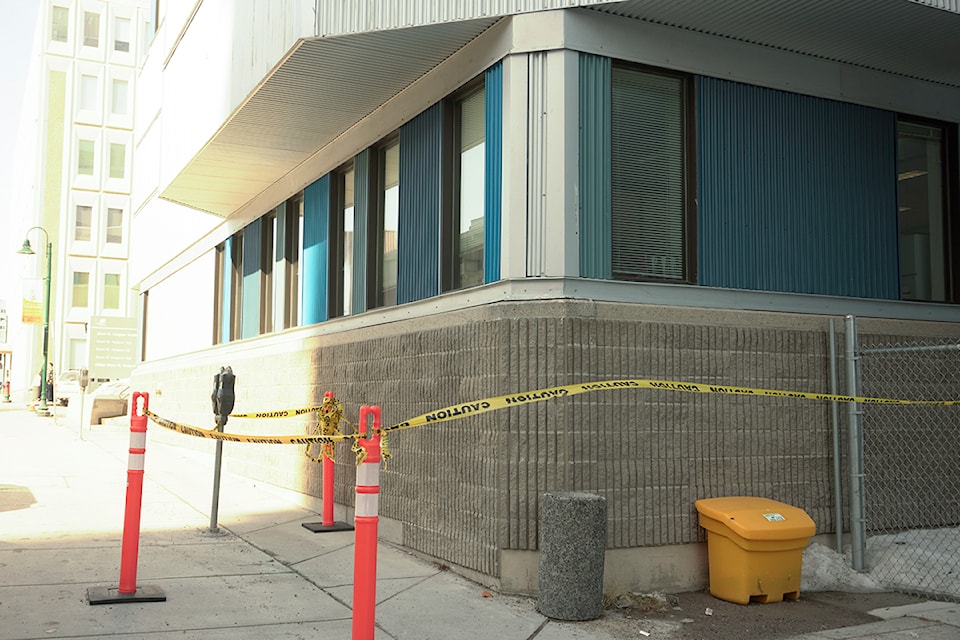Yellowknifers have come to expect spring months characterized by hopeful stints of mild temperatures, followed by swift drops back below freezing.
The frequent freezing and thawing can create icicle hazards, said Cary Ingram, chief mining and occupational health and safety inspector for the Workers’ Safety and Compensation Commission of the NWT and Nunavut (WSCC).
With taped off areas and signs advising of falling ice dotting the city, NNSL Media sought to learn how threats of falling ice and snow are regulated to ensure public safety.
In March, the Department of Infrastructure (INF) published the fourth edition of the Good Building Practice for Northern facilities (GBP).
The document, updated from a previous 2009 edition, supplements national codes and standards for building design, construction and maintenance.
“Managing the full life-cycle of infrastructure in the North requires a deep awareness and understanding of the unique challenges and risks arising from harsh climatic conditions,” INF said in a news release announcing the newest GBP edition.
The GNWT lists compliance with the GBP as a contract requirement in GNWT design and construction projects, but it’s not enforced as a code or standard. Compliance is not required for
non GNWT projects, though the document may be used as a reference, INF spokesperson Joe Fitzgerald said in an email.
He said that the GBP is a guide for best practices but does not replace codes, standards, legislation and municipal bylaws. Fitzgerald confirmed there is no NWT legislation enforcing the removal of ice and snow from buildings.
The issue of preventing snow/ice fall from roofs is not addressed in the National Building Code or in building design standards.
Likewise, City of Yellowknife spokesperson Alison Harrower said the city “does not regulate the accumulation of snow on buildings.”
In construction and alternation of buildings, City of Yellowknife building inspectors follow the National Building Code of Canada, she said. While the document notes regulation on snow loads for building infrastructure, it does not seem to mention requirements to protect passersby from falling ice and snow.
Like other building owners, Fitzgerald said the GNWT monitors and removes snow/ice build-up on the roofs of GNWT-owned buildings as part of regular site-specific maintenance plans.
The WSCC’s Safety Act and Regulations and Workers’ Compensation Acts list responsibilities for property owners to promote safety in and around their properties.
While there is no set schedule for roof clearing, Ingram said it’s the employers’ responsibility to ensure a safe workplace free of hazards for employees and the public.
“At this time of year, you may want to do that once or twice a day,” he said.
While WSCC has the ability to investigate and prosecute, Ingram said the arm’s length government agency instead prioritizes working with employers and employees to ensure workplace safety.
If employers refuse to cooperate, that’s when they might consider alternatives.
“If we find negligence then we would look at putting a case together and prosecuting,” Ingram said, “but that’s a last resort.”
With the increased snowfall this year, he said mindfulness of roof clearing is extra important.
“Homeowners and business owners have to keep a close eye to ensure that doesn’t build up,” he advised. “It can be quite dangerous and you never know when it can come out and hurt someone.”
